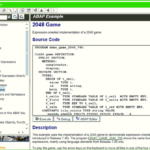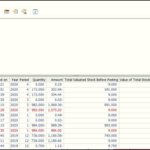Tips and tricks on Bank Reconciliation in SAP

In this blog post, we will explore Manual and electronic Bank Reconciliation and hidden features in it. I am assuming that you already know the configuration and end-user process of EBS and BRS, if not you can refer this eBook to dive deep into it.
Transaction FF67 is used to post bank statement manually and front screen look like this:

Here bank key and account number have to be entered of the bank for which bank statement should be posted.
But don’t you think, it is too hard to remember the bank key and account number of each bank account, especially when we have a shortcut ID to house bank and account.
So let’s change this:
GoTo Menu – Settings – Specification

Click on the specification

Here tick the internal bank determination
And press enter

And here you go, bank key replace with House bank, and Account ID takes place of Account number
Also Read: Functioning of CO-PA in make to order scenario
Now let’s go to the transaction FEBAN
It is used to post-process the bank statements if in case of any error. But FEBAN is only useful when FF67 is not run in batch input job because in that case system considers that the user somehow managed to do posting and the statements are posted. These are some limitations of ECC because submodules are not consolidated to the G/L
Execute the FEBAN

The Red ones did not get posted in FF67, there is some problem while posting these entries
But now how we can know about the errors? Let’s see:
GoTo Edit – Posting Mode – In Foreground

Here select in foreground option, this will trigger system to perform posting in foreground

Then right click on the item and select Post Items

And the document is getting posted in front of our eyes.. look for the error and rectify it.
Read eBook: SAP DME – A Simplified Guide
Do you know we can use interpretation algorithm in manual bank reconciliation as well
It is possible to use interpretation algorithm, where posting rules are assigned to the business transactions. In below path:-

Execute the node

There are a total of 42 types of interpretation algorithms available to choose from. It is not possible to explain the use of all those here, but you can download this document, where you can find detail explanation of each interpretation algorithm
We will keep updating this blog, as per your suggestions and necessity…. stay tuned.
If you have any suggestions or questions do let us know in the comment section or you can also write us directly.
Till then you can have look at our ebooks.
If you enjoy the blogpost, then you can stay connected with us on below platforms:
Also subscribe below to receive update of new blogpost




